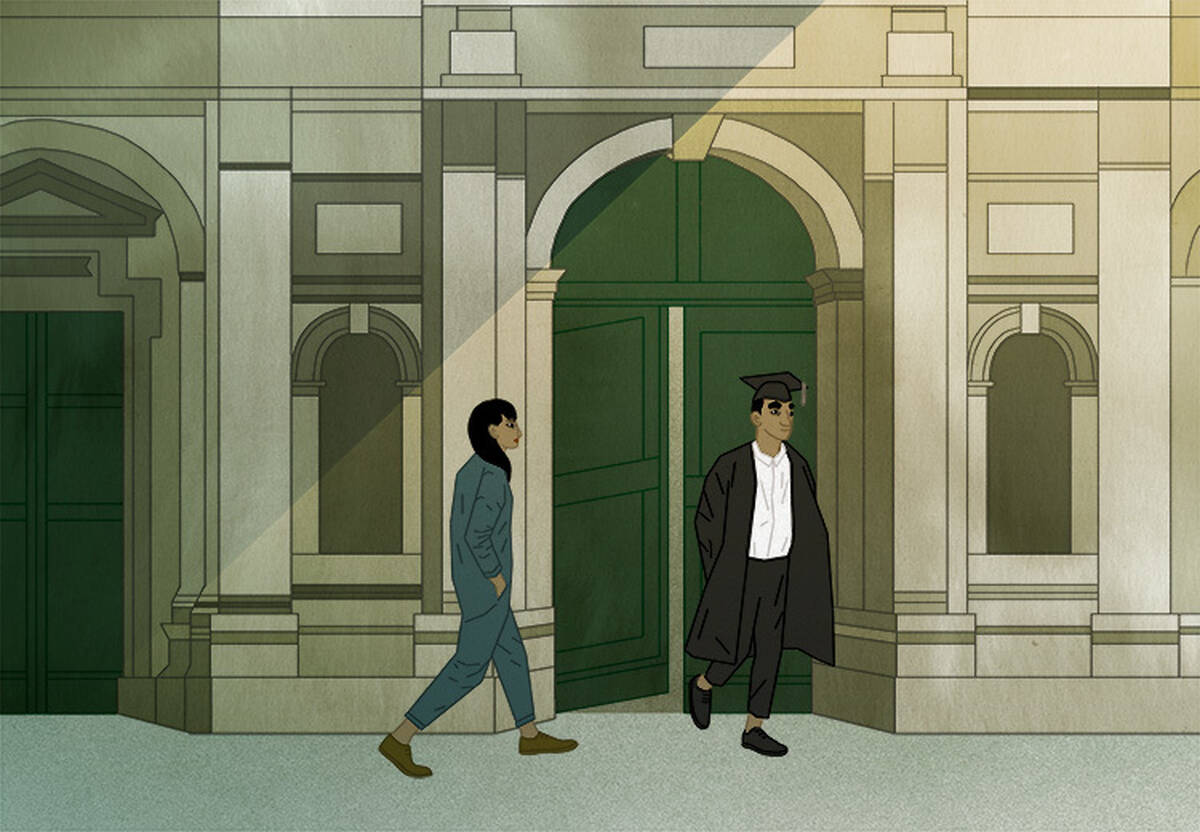Innovation Strategy Economics Jul 6, 2017
STEM Degrees Are Good for Careers. But Do They Lead to More Innovation?
Science, technology, engineering, and math education helps job prospects, but hurts the likelihood of becoming an inventor.

Lisa Röper
There is much buzz among educators and policy makers about the value of a STEM degree. Graduating with a degree in science, technology, engineering, or math (STEM) is indeed good for the individual, with studies showing better job prospects and higher pay. But what is the impact on the overall economy?
Many people simply assume the economy benefits from STEM majors, believing that these graduates lead to more innovation and long-term economic growth. A 2012 report by a US presidential council, for example, was premised on the need to produce more STEM graduates in order to stay ahead of China and India. But what is the actual effect of a STEM education on innovation?
The answer is less obvious than it might seem. Even if future inventors are more likely to have majored in STEM fields, it is not necessarily true that education catalyzed those inventions.
In a new study, Nicola Bianchi of the Kellogg School collected data from a turning point in the history of his native Italy. In 1961, large numbers of students who had studied STEM subjects in high school suddenly gained access to a university-level STEM education. By tracking these students’ subsequent patent records and comparing them with those of similar students who graduated before 1961, Bianchi was able to tell what university education actually did for innovation.
He found that, surprisingly, the most talented STEM high school students actually patented much less after getting access to STEM majors than they had done before.
A STEM education, it turned out, opened up opportunities for these students beyond occupations that tend to produce patents. “Getting a STEM degree made these people eligible for other types of jobs,” Bianchi says, “and they took them.”
A Watershed Moment
For nearly four decades, starting in the 1920s, Italy’s Fascist policy dictated that only graduates of university-prep high schools could get a university-level degree in a STEM field. Graduates of technical high schools, in contrast, could not further their education no matter how much potential they showed. This included industrial students, who attended technical high schools specifically to prepare for jobs in construction, electronics, chemicals, and the like.
This rigid policy continued even after the fall of Fascism: in the aftermath of World War II, the education system was not exactly the first thing the country wanted to rebuild. But by the early 1960s, many Italians could see that education reform was necessary.
“Industry needed engineers,” Bianchi explains—workers with high-level skills that the industrial high schools simply were not producing. So starting in 1961, students from industrial high schools were allowed to enroll in university STEM majors. As a result, thousands of additional students flowed into these majors.
That abrupt change yielded the data that Bianchi and coauthor Michela Giorcelli at UCLA needed.
“The experiment here is to compare industrial students who are similar on a lot of characteristics,” Bianchi explains—except for a crucial fact. Some of those students completed high school before 1961, when they could not go on to earn a university STEM degree, while others graduated just after the educational expansion, meaning the researchers were able to compare cohorts of students who were only a few years apart.
The researchers focused on Milan, whose residents produce more Italian patents than any other city. Bianchi visited all the city’s public high schools, collecting information for students who graduated between 1958 and 1973. Though one of the 19 schools had lost its records, and another wouldn’t grant access to its archive, Bianchi managed to gather and digitize data from the rest of the schools—for a total of 46,473 students.
To analyze innovation outcomes, Bianchi then linked this education data to Italian and European patent data, tracking whether each student went on to patent an invention. While innovation comes in many forms, it is not always easy to measure. By using patents, Bianchi was able to focus on an easily measurable output of innovation.
A Surprise at the Top
So how did the students fare as inventors before and after they had access to a university STEM degree? The answer, it turned out, depended largely on how well the students had done before they reached college.
Bianchi found that the best high-school students—those who scored in the top 25 percent of their class on a national exit exam—were about 50 percent less likely to produce a patent if they graduated after the education reform, compared with their peers who had graduated before 1961.
“The relationship between scientific education and innovation is tricky.”
The bottom 75 percent of students, on the other hand, were somewhat more likely to become inventors if they had graduated after the reform.
It seems odd that the best students—those who stood to gain the most from a university education—would actually end up inventing less once they got access to STEM majors. So what explains this result?
Bianchi and Giorcelli had a hunch that the explanation had to do with the kinds of jobs industrial students could get with and without a university STEM degree.
To test this idea, they needed occupational data. Yet, when they started the project in 2014, Italy’s social security administration kept such information under wraps.
But then economist Tito Boeri with an appreciation for research data took the helm of the agency. Last summer, Bianchi and Giorcelli were able to delve into the administration’s archives in Rome.
They discovered that before the education reforms, top industrial students often became employees of manufacturing firms.
“Our idea is that they were in this occupation where they were very close to industrial processes, close to machines, and part of their job was to make their machines a little better,” Bianchi explains. “That entailed getting patents to improve industrial processes.”
For example, one inventor from this era patented a process for removing acidic gases from gas mixtures; another invented a device for testing industrial power screwdrivers.
After the education reform, top industrial students who earned college STEM degrees got better jobs outside the manufacturing sector, often becoming self-employed engineers. That’s a great job, Bianchi says, but it is not one where you produce a lot of patents.
Industrial students in the bottom three-quarters, on the other hand, tended to stay in the manufacturing sector. Their university degree paved the way to white-collar and management jobs in the same types of firms, engaging them even more closely in their employers’ innovation processes, and yielding more patents.
A Lesson for Policy Makers
Bianchi is quick to acknowledge that Italy in the 1970s and 1980s was very different from the United States today. Americans with only a high-school education do not produce many inventions, for example.
But one lesson from Italy’s experience is generalizable, Bianchi believes. In any country, some economic sectors produce many more patents than others. What’s more, people with STEM degrees have skills that are in demand by multiple sectors—including those fields that do not produce many patents.
Think of the brilliant physics students and computer science majors who get lured away by lucrative jobs in the finance sector. These Wall Street “quants” make a lot of money, but they rarely patent anything.
“The relationship between scientific education and innovation is tricky,” Bianchi concludes. “From a policy perspective, it’s not as simple as saying, ‘Let’s induce more people to go into STEM majors and get more STEM degrees so we’re for sure going to have more STEM workers in the economy, and these STEM workers are going to produce more innovation, and they’re going to increase economic growth, and they’re going to make our country great,’” he says. “It’s not that easy.”



